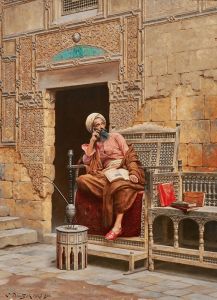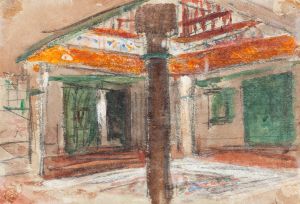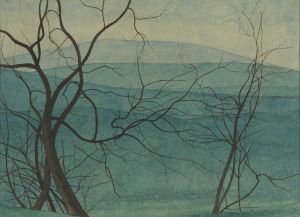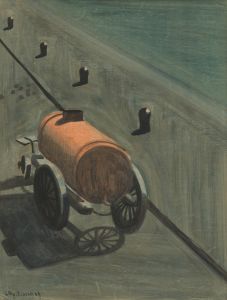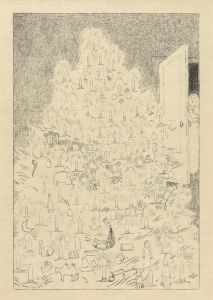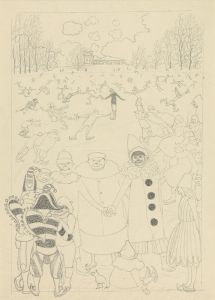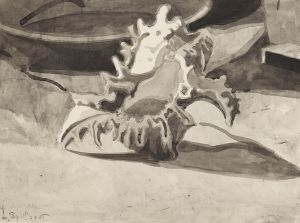
Les Serres Chaudes 1
A hand-painted replica of Léon Spilliaert’s masterpiece Les Serres Chaudes 1, meticulously crafted by professional artists to capture the true essence of the original. Each piece is created with museum-quality canvas and rare mineral pigments, carefully painted by experienced artists with delicate brushstrokes and rich, layered colors to perfectly recreate the texture of the original artwork. Unlike machine-printed reproductions, this hand-painted version brings the painting to life, infused with the artist’s emotions and skill in every stroke. Whether for personal collection or home decoration, it instantly elevates the artistic atmosphere of any space.
Léon Spilliaert was a Belgian symbolist painter and graphic artist, known for his unique style that often conveyed a sense of mystery and introspection. Born in Ostend, Belgium, in 1881, Spilliaert's work is characterized by its exploration of mood, atmosphere, and the human psyche. His art often features solitary figures and desolate landscapes, rendered in a muted palette that enhances the emotional depth of his subjects.
One of Spilliaert's notable works is "Les Serres Chaudes 1," which translates to "The Hot Houses 1." This piece is part of a series that reflects Spilliaert's fascination with enclosed spaces and the interplay of light and shadow. The title itself suggests a focus on greenhouses, which are often associated with growth, warmth, and a certain degree of confinement. However, Spilliaert's interpretation of such spaces is far from conventional.
"Les Serres Chaudes 1" is emblematic of Spilliaert's ability to evoke a sense of unease and introspection. The painting is executed in a style that blends elements of symbolism and expressionism, two movements that greatly influenced Spilliaert's work. His use of color is particularly noteworthy; he often employed a limited palette to create stark contrasts and highlight the emotional undertones of his compositions.
In this work, Spilliaert captures the essence of a greenhouse environment, but with a twist that is uniquely his own. The painting's composition may include elements such as elongated shadows, distorted perspectives, and an eerie stillness that invites viewers to ponder the deeper meanings behind the imagery. Spilliaert's technique often involved the use of watercolor, ink, and pastel, allowing him to achieve a delicate balance between detail and abstraction.
The "Les Serres Chaudes" series is thought to be inspired by the poetry of Maurice Maeterlinck, a fellow Belgian symbolist. Maeterlinck's work often delved into themes of existentialism and the unseen forces that shape human experience, themes that resonate with Spilliaert's artistic vision. The connection between Spilliaert's paintings and Maeterlinck's poetry underscores the interdisciplinary nature of the symbolist movement, where literature and visual art frequently intersected.
Spilliaert's work, including "Les Serres Chaudes 1," is celebrated for its ability to convey complex emotions through simple yet powerful imagery. His paintings often lack human figures, yet they are imbued with a palpable sense of presence and introspection. This quality has led to comparisons with other symbolist artists, such as Edvard Munch and Odilon Redon, who similarly explored the depths of human emotion and the mysteries of existence.
Throughout his career, Spilliaert remained somewhat of an outsider in the art world, never fully aligning himself with any particular movement or group. This independence allowed him to develop a distinctive style that continues to captivate audiences today. His work is housed in various museums and private collections, where it is appreciated for its haunting beauty and psychological depth.
In summary, "Les Serres Chaudes 1" by Léon Spilliaert is a testament to the artist's skill in capturing the intangible aspects of human experience. Through his masterful use of color, composition, and symbolism, Spilliaert invites viewers to explore the hidden corners of the mind and the subtle interplay between light and shadow. His work remains a significant contribution to the world of symbolist art, offering a glimpse into the enigmatic world of one of Belgium's most intriguing artists.







